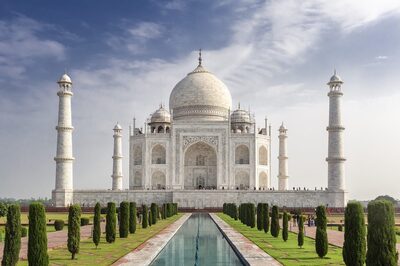
views
The Indian Railways is finally set to replace Old Yamuna Bridge, also known as, the Purana Lohe Ka Pul with a new bridge — whose plan was sanctioned over 25 years ago– adjacent to it by the end of this year.
The new bridge will be finished soon as the foundation work, which was an obstacle to the project, has now been completed.
The old bridge lies close to Old Delhi Railway station and joins Shahdara and Old Delhi Railway station via rail and road link.
The long-awaited projected, which has missed a number of deadlines, owing to obstacles with the execution is finally nearing its close.
“There were a number of issues including the issue related to the Archeological Survey of India and also some foundations but it has all been sorted out now and it will be completed very soon. This will help us maintain the smooth rail traffic over Yamuna River,” said Deepak Kumar, Chief Public Relation Officer of Northern Railways.
The new bridge was planned back much before 1997-98 when the work was sanctioned. Till date, all its 15 foundations have been completed and superstructure work is in full pace.
There are a total 14 spans and open web girders have been launched at 6 numbers of spans. The construction department of Northern Railways which is carrying out the project is hopeful that it would be completed by September 2023, officials say.
Over 25 years and counting after first plan sanctioned
After the work was sanctioned, the project started in 2003 but was halted time and again because of several reasons. The first one was the objection from ASI.
As per the proposed alignment of the new bridge, its approach track was to pass through the premises of Salimgarh Fort, a Protected Monument, to connect with the existing railway tracks.
To execute the work, a piece of land of approximately 1000 sqm was needed to be acquired in the premises of Salimgarh Fort. After several meetings and approvals, in 2007, ASI withdrew its permission to railways as they apprehended that dismantling a portion of the wall would cause irreversible damage to the protected monument.
Finally in 2011, based on a report submitted by the ‘Cultural Impact Assessment Committee’ appointed for this issue, it was decided to change the alignment to avoid the Salimgarh Fort.
Railways started the work once again and gave several deadlines during the years but could not complete the project.
In an RTI reply filed by CNN-News 18 in 2020, it was said that there is some technical issue with the foundations of the bridge and the project is getting delayed.
It was a technical problem in the methodology but later, for the 5 wells in the flowing river area, a new/alternate Pneumatic sinking methodology was suggested.
In 2012, ASI granted permission to carry out the balance work with the revised alignment. IIT/Delhi was nominated to finalize the methodology for construction of balance sub-structure. In view of the complexity of the site, a Technical Advisory Group (TAG), engaging eminent experts, was also formed to suggest the methodology to execute the balance works.
The historic old bridge constructed in 1866
The old Yamuna bridge which is also considered as an identity of Delhi is over 150 years old. It was constructed in 1866 and has outlived its life.
It consists of 12 spans of 202.5 feet and two end spans of 34.5 feet each. The bridge was designed and built across the Yamuna River duly factoring in the occasional high floods witnessed in the river.
There are total 11 piers and foundation level for all piers are different.
Considering its age, railways had carried out fabrication work in 2018 on the bridge for its better survival.
“Though it is safe for rail traffic, we maintain cautions at several points. We all place speed restrictions seeing the water flow in the river,” said a senior officer from Delhi Division of Northern Railways.
Benefits for rail passengers
Even when there are claims regarding safety while traffic passes through the old bridge, senior officers of railways say that the bridge has completed its life and it is an extension given that several fabrication works have been carried out on it.
The speed restriction on it and danger associated during monsoon and flood like situation prompted the need of a new bridge as early as possible.
“Currently, we have 120 to 150 trains passing by it on a daily basis including freight trains. Road traffic is managed by Delhi Govt and heavy vehicles are not allowed. Once our new bridge is ready, we will shift our traffic from this bridge to our new bridge,” said Kumar. This will ensure better speed and smooth traffic management that will help in operation, he added.

















Comments
0 comment